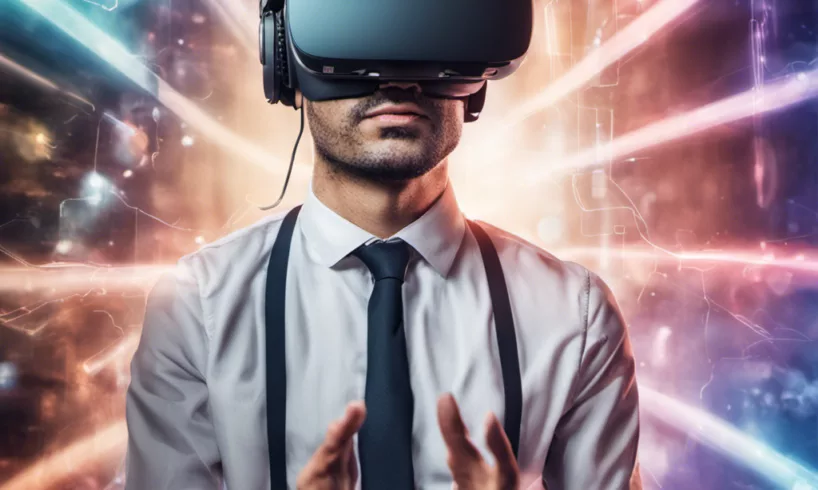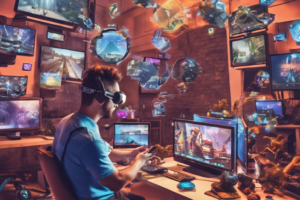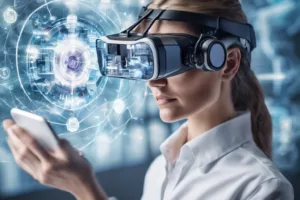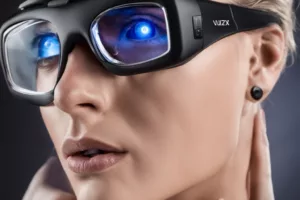
Global tech giants race to create the hardware that will propel the immersive era, revolutionizing industries and consumer experiences.
In a world where screens dominate our daily lives, the future holds a promise of a more immersive experience. Global technology giants, including Apple, Meta, and Microsoft, are in a race to develop the hardware that will bring about the “immersive era” – a time when augmented and virtual reality seamlessly blend with our daily lives, transforming both work and play. This article explores the potential of immersive technology, its current challenges, and the impact it can have on various industries and consumer experiences.
The Potential of Immersive Tech
Immersive technology is predicted to touch every part of our economy, according to Jessica Driscoll, director of immersive technology at the innovation center Digital Catapult. The technology has the potential to make the design and manufacture of goods more efficient, enable environmentally sustainable cross-border collaboration, and revolutionize industries such as construction and maintenance. Consumer spending on virtual reality (VR) is expected to triple by 2027, reaching $5.7 billion globally, according to tech consultancy Omdia.
The Current State of Immersive Tech
While VR has made some inroads in workplaces, particularly in specialist training, its usage among consumers remains limited. Augmented reality (AR), on the other hand, has already found its place in various apps, such as visual translation, face filters, and shopping apps. The true potential of immersive tech is still to be unlocked, as developers grapple with challenges like miniaturization, design, and interoperability between different hardware and software.
AR and VR in Industries
AR is expected to have the biggest impact on capital-intensive heavy industries, such as construction and maintenance, where workers need real-time information. Companies like Microsoft are already developing headsets, like the HoloLens 2, specifically targeted at industries like manufacturing, construction, and healthcare. VR, on the other hand, has seen widespread adoption in gaming but has been slower to progress in terms of content and use cases.
Immersive Tech in the Auto Industry
Automotive manufacturers are embracing AR and VR to develop the next wave of in-car entertainment systems and route navigation. Companies like Ford, Volkswagen, and BMW are enthusiastic about VR, while Chinese carmakers are aggressively pursuing partnerships in this space. The rise of electric and autonomous vehicles is further driving the demand for in-car diversions, creating opportunities for immersive tech in the auto industry.
The Future of Immersive Tech
Tech experts predict that the boundary between AR and VR will blur in the future. The launch of Apple's upcoming Vision Pro headset, which offers both VR and AR experiences, is seen as an important milestone in this direction. The headset, expected to be priced at $3,499, boasts a sophisticated wearable computer and the advantage of Apple's ecosystem. However, challenges around interoperability, IP licensing, and design need to be addressed to accelerate wider adoption among consumers.
The immersive era is on the horizon, with global tech giants racing to develop the hardware that will revolutionize industries and consumer experiences. While VR has made progress in specialist training and gaming, its true potential is yet to be fully realized. AR, on the other hand, holds great promise in capital-intensive industries, providing real-time information to workers. The future of immersive tech lies in bridging the gap between physical and digital experiences, and the rollout of 5G technology will play a crucial role in enabling complex mixed reality applications. As the immersive era unfolds, the boundaries between the real and virtual world will continue to blur, transforming the way we work and play.

George Smith, with over a decade in tech journalism, excels in breaking down emerging tech trends. His work, spanning tech blogs and print, combines in-depth analysis with clarity, appealing to a wide readership. George's pieces often explore technology's societal impact, showcasing his foresight in industry trends.







